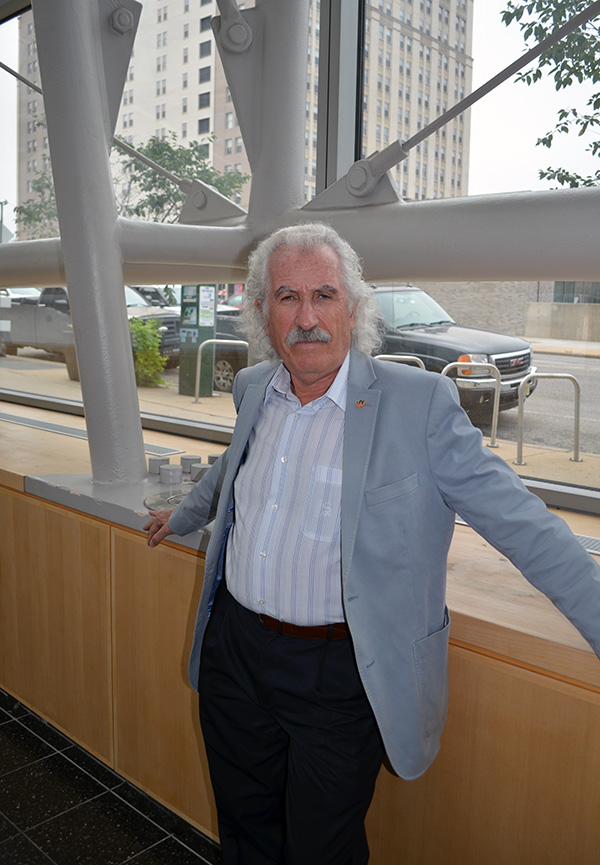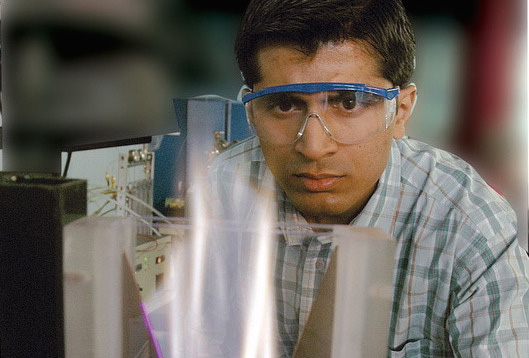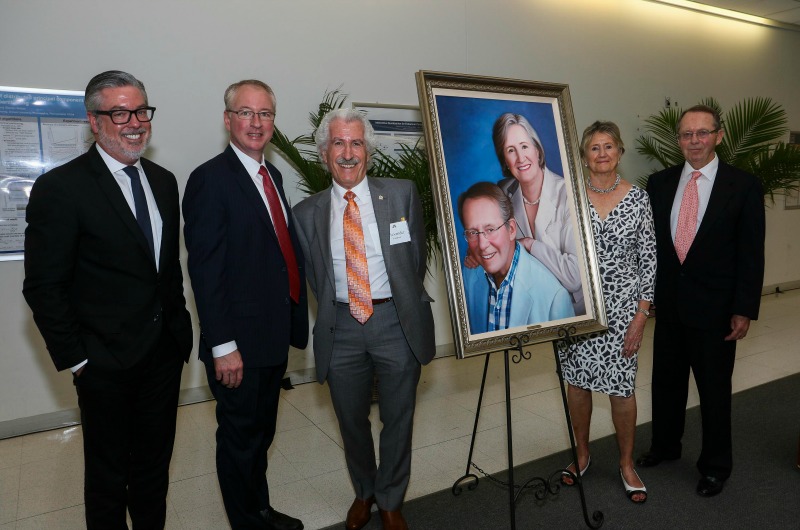
Dr. Alexander Fridman
As Nyheim Chair Professor and Director of the C. & J. Nyheim Plasma Institute of Drexel University, Dr. Alexander Fridman is a recognized world leader in research relating to plasma science and engineering. Dr. Fridman is renowned for his developments in novel plasma approaches to material treatment, fuel conversion, hydrogen production, aerospace engineering, biology, environmental control, agriculture and food processing.
Dr. Fridman and his research group are recognized for their contribution to the development of plasma medicine— revolutionary research focused on direct plasma interaction with living tissues, direct plasma application for wound treatment, skin sterilization, blood coagulation, and treatment of different diseases (i.e. cancer) that are challenging to treat. Dr. Fridman is known today as a pioneer of plasma medicine and is the founding president of the International Society of Plasma Medicine.

Student in plasma lab
Prior to his time at Drexel, Dr. Fridman has worked and taught as a professor in different national laboratories and universities in the United States, France and Russia. He has published eight monographs (with multiple editions), and more than 1,000 scientific papers (with a total citation index of about 35,000; h-index 83), organized and chaired several major international conferences, and holds more than 30 patents. He has received numerous accolades for his contributions. Most recently in 2019, Dr. Fridman was honored with the Reactive Plasma Award, the highest award of the Japanese Society of Plasma Physics and Electronics, and International Society for Reactive Plasmas. He has also received the prestigious Plasma Chemistry Award, the highest award in the field of plasma engineering.

Pictured left to right at the 2016 ceremony renaming the Plasma Institute. President John A. Fry, Dean Joe Hughes, Alexander Fridman, Christel Nyheim and John Nyheim.
At Drexel, Dr. Fridman’s is dedicated to his work in the Nyheim Plasma Institute (NPI)— the birthplace of the field of plasma medicine, with a commitment to its “educational mission and to creating a collegial research environment supporting breakthroughs in plasma science and engineering.” Dr. Fridman founded the institute in 2002 with the goal of specializing in plasma engineering and medicine, though its focus changes depending on the course the research takes. Innovation runs deep at the Institute— whether working on treatments for cancer, plasma chemistry and biology, or plasma applications in agriculture and food preservation. The Institute’s focus is always plasma, but application directions rely on the most urgent societal needs, and the unmet challenges in modern technology and medicine.
The COVID-19 pandemic has led the institute to work on related projects, the first focusing on sterilization and regeneration of masks.
“We developed together with our industrial partners a machine that looks like a microwave—you put groups of masks in it, and in about 20 minutes, you take them out, they are clean, and you can reuse them,” shares Dr. Fridman. “What’s important is that it is not just theoretical— it’s very practical. In a short period of time, we made 100 machines for the army. There is now a spin-off company—AAPlasma. They’re leading commercialization of the machines, and working on getting emergency approval from the FDA.”

Dr. Fridman speaking at the 1st International Meeting on Plasma Cosmetic Science.
The second coronavirus-related project is a system for air purification, utilizing plasmas that can clean air. Machines like this already exist to ensure the air is sterile, but the Institute intends to enhance this technology to kill coronavirus. Institute researchers, especially Drs. Alexander Rabinovich and Danil Dobrynin are working on the corona-virus projects together with Dr. Christopher Sales and his colleagues from the Department of Civil, Architectural and Environmental Engineering.
“Putting these devices in classrooms could be very interesting,” stipulates Dr. Fridman. “Without an air-cleaning device, you’re roughly 95% safe. But with the device, you’re about 99% safe. You always have to be cautious— but along with wearing masks, air-cleaning a room can lower the risk of spreading the virus.”
While there is an abundance of plasma applications already in use, the future of plasma is broad and wide-ranging. “Plasma is expensive, unfortunately, so if you can do the same thing but cheaper, people will forget about plasma,” Dr. Fridman warns. “It’s difficult to predict, but my feeling is that plasma is best when there is no clear competition. Plasma in 50 years from today will still be applied in electronics, [but] in 50 years, it will be in new electronics, like soft electronics, like napkins. It will also be very significant in branches of medicine— healing diseases, putting high energy into the human body. Treating incurable diseases like Alzheimer’s, cancer, making nano-electronics and nano-materials. Plasma will hopefully help in these areas.” Plasma science and engineering is very interdisciplinary, sometimes very challenging, but always extremely exciting.